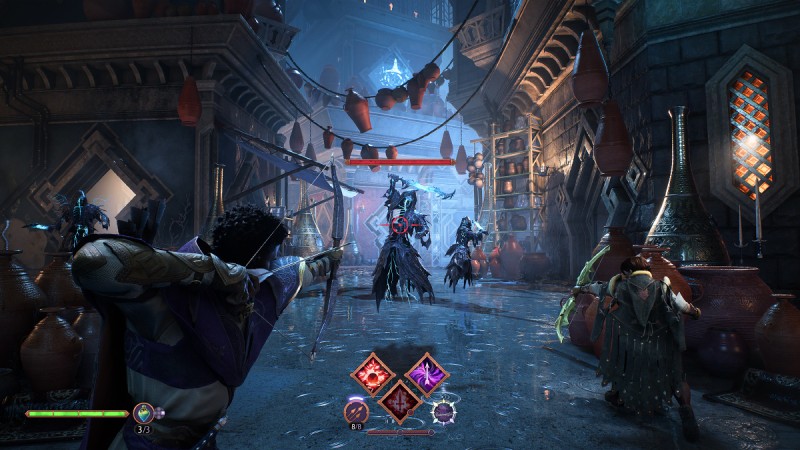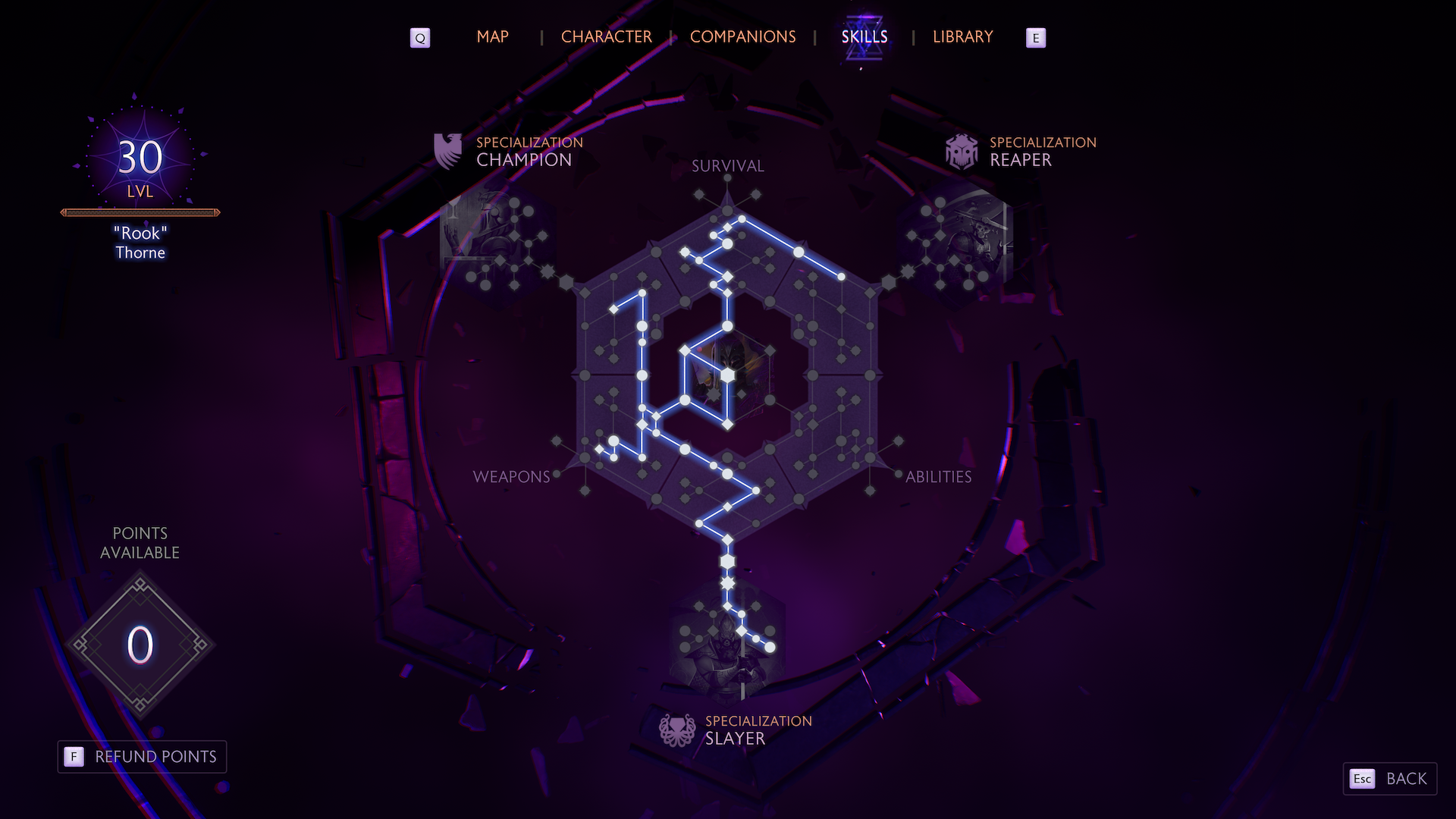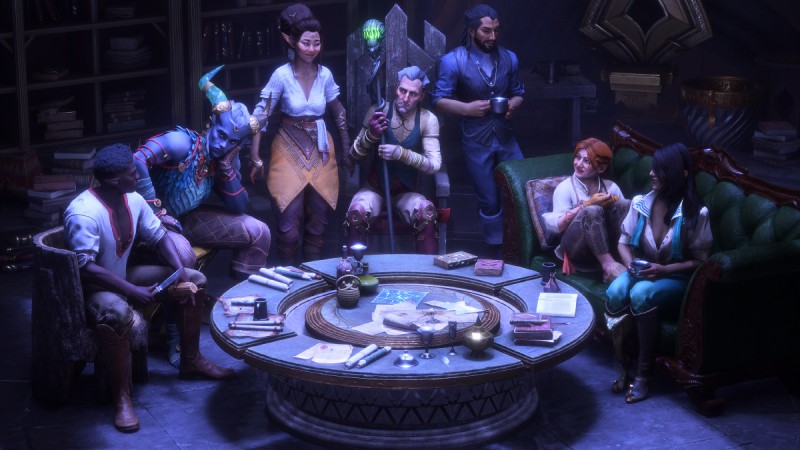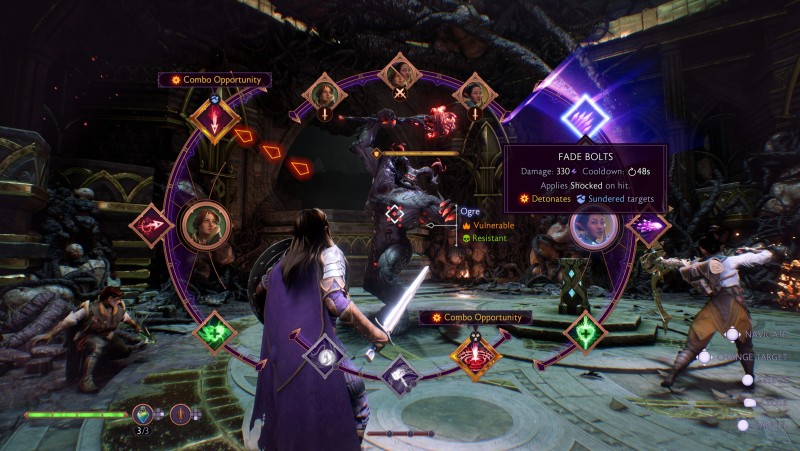If you’re at all familiar with the Dragon Age series, you probably already know that BioWare has experimented a lot with its gameplay. From the real-time strategy RPG approach of Dragon Age: Origins to the action experience of Dragon Age II, which takes place primarily in a single city, to the strategy-action mix of Dragon Age: Inquisition, BioWare hasn’t quite nailed down the franchise’s combat. However, there is a clear throughline between Origins and Inquisition: BioWare apparently wants this franchise to be action, but has attempted to move toward that without abandoning its longtime fans.
With Dragon Age: The Veilguard, BioWare has completed its transition from strategy to real-time action, but thanks to an optional pause-and-play tactical combat wheel that harkens back to the series’ origins, I have the impression that he found an excellent (battle)Dragon Age fighting ground. Of course, it’s hard to say how Veilguard’s action will hold up in what will surely be a multi-dozen hour RPG, but if what I’ve seen so far is any indication, the studio is on to something thing.
A change of strategy

“I think the first thing to keep in mind is that the combat … in the franchise has been an evolution,” game director Corinne Busche tells me in BioWare’s Edmonton office. “Each entry reinvents what combat is and I would say our goal was to make sure we had a system that made players feel like they could actually enter the world of Thedas. It’s not a gamer who watches from afar – they are inside this world being this authentic world that has come to life, the combat system has to support that, so you control every action, every block, every dodge, every. sword strike.
Busche says players perform each swing in real time, with special attention paid to swing-through and animation cancellation. On the subject of undoing, I look at Busche’s “bookmark” combos in one quick glance. With this mechanic, players can pause a combo’s status by dashing to safety and continue the combo where they left off afterwards. Alongside sprinting, there’s a parry for certain classes, the ability to charge moves, and a revamped healing system that allows players to quickly use potions by pressing directly on the d-pad.
Busche says every character will play the same regardless of class, as you’ll perform light and heavy attacks with the same buttons, use abilities with the same buttons, and interact with the combo wheel the same way. manner. During my demo, at one point we use a Qunari sword and shield warrior who shoots from the hip and aims his shield to throw like Captain America while dealing high damage with a sword. Pressing the same buttons as a mage can launch ranged magical attacks instead of a shield.
Abilities, like a warrior’s Spartan kick or a mage’s firewall that deals continuous damage, add to the player’s repertoire of combat options. Warriors can parry incoming attacks, stunning enemies. Rogues have a larger parry window, and mages cannot parry at all but instead cast a shield that blocks all incoming damage as long as they have the mana to maintain the shield.
“It’s just the foundation that allows us to get that level of immersion: ‘I’m actually in this world; I’m part of it,'” Busche says. “But again, the abilities, the strategy, connecting the abilities of my companions to perform devastating combos, that’s really where the depth and complexity comes in.”
Abilities and Skill Tree

Warrior Tower Skill Tree
This extends to companions who, at your choice, bring three abilities (out of five total) into combat, performed either with the quick select buttons or the pause-and-play combat wheel. Each time you increase a companion’s relationship level, you unlock a skill point to spend specifically on that companion – this is how you unlock new combat abilities.
While the companion skill trees pale in comparison to Rook’s expansive tree, which offers passive abilities, combat abilities, and more, as well as paths to three unique class specializations, there’s still some customization here.
You can find the skill tree for Rook and his companions in Veilguard’s start or pause menu. This menu also contains pages for the Veilguard map, journal, character sheets, and a library of story information. Here you can compare gear and equip new gear for Rook and his companions, create weapon loadouts, and customize your abilities and builds via the aforementioned skill tree, which seems relatively easy to understand.
You won’t find details here, “just actual numbers,” Busche says. In other words, a new trait unlocked could increase damage against armor by 25%, but that’s as in-depth as the numbers allow. Passive abilities unlock jump attacks and guarantee critical strike opportunities, while abilities add moves like Firewall and Spartan Kicks to your arsenal. As you define this skill tree, which is 100% tailored to each class, you will get closer to unlocking a specialization (which does not require reaching the level cap of 50). Each class has three specializations, each with a unique ultimate ability. Busche says BioWare’s philosophy with the skill tree is to “change the way you play, not the statistical details.”
Combat companions

If you completely ignore your companions in battle, they will attack their targets, use their abilities, and defeat enemies on their own. “(The companions) are their own people,” Busche says. “They have their own behaviors, they have their own autonomy on the battlefield, they will choose their own targets. As their storylines progress, they will learn to use their abilities more competently, and you will really get the the feeling of fighting alongside these characters created in battle.
Speaking about companion synergy, Busche adds: “I see all of Harding’s abilities and I see everything Bellara is capable of. And sometimes I use vulnerabilities synergistically. Maybe I take a break or I slow down time with Bellara so I can unleash devastating attacks with Harding, knock the enemy down, and then I, as Rook, rush in and capitalize on this setup they’ve created for me. a game that’s all about creating that organic feeling of teamwork.
Busche says there are more explicit synergies, with intentional combos where specific companions can clash, and you can queue up their abilities to do just that. This is what the pause-and-play combat wheel is for in Veilguard.
In this screen, which pauses the camera and displays a flashy combat wheel that highlights your skills and those of your companions, you can choose abilities, queue them, and strategize with synergies and combos recognized by the game, while targeting specific enemies. Select what you want and release the wheel to watch your selections unfold.
Put it all together

During a mission in Arlathan Forest after the Veilguard prologue, Busche uses Veilguard’s double-charge mechanic. As a Rook, you can create two types of weapons for quick mid-combat changes. As a Rook Mage, she uses magic attacks to add three stacks of Arcane Accumulation to create an Arcane Bomb on a Sentinel, a set of mechanical armor possessed by a demon. If you hit the Sentinel’s Arcane Bomb with a heavy attack, the enemy will take devastating damage. Once the Sentinel has an Arcane Bomb on it, Busche begins charging a heavy attack on his magic staff, then switches to magic daggers in Rook’s second loadout, accessed by quickly tapping the D-pad to unleash quick light attacks . then return to bat to finish charging his attack. She then unleashes a heavy attack and the arcane bomb explodes in a liquid swirl of green magic.
“I’ve seen (Veilguard’s combat) get refined over time (and) I love it,” Gary McKay, BioWare’s general manager, told me. “I like that balance of fluid real-time action, but also the ability to have depth in the RPG, not just in terms of pause-and-play, but also depth in terms of how you bring your companions on the battlefield What are you going to do with their skill points? What equipment are you going to use? It’s all about getting Rook to the center of the battlefield, and I love that.”
Mark Darrah, former Dragon Age executive producer and Veilguard consultant, believes that Veilguard is the first game where combat is legitimately fun. “What I see in Veilguard is a game that finally bridges the gap,” he says. “Unfortunately, the previous Dragon Age games got into the realm of ‘the combat wasn’t too bad.’ In this game, the combat is really fun, but it maintains that common thread that’s always been there. You focus on Rook, on your character, while still maintaining that control and character that goes into the combat experience of the other members of your party”.
Watching Busche play several hours of Veilguard, I get the impression that BioWare has designed a combat system that relies heavily on players extracting what they want from it. If you’re willing to mash buttons and freely use your abilities when their cooldown expires, you can probably progress OK (albeit on the game’s easier difficulties). But if you want to strategize your combos, take advantage of elemental vulnerabilities, min-max companions, and Rook loadouts, you can do that too, and I think you’ll find Veilguard rewards that with a more rewarding experience.
For more on the game, including exclusive details, interviews, video features and more, click the Dragon Age: The Veilguard hub button below.